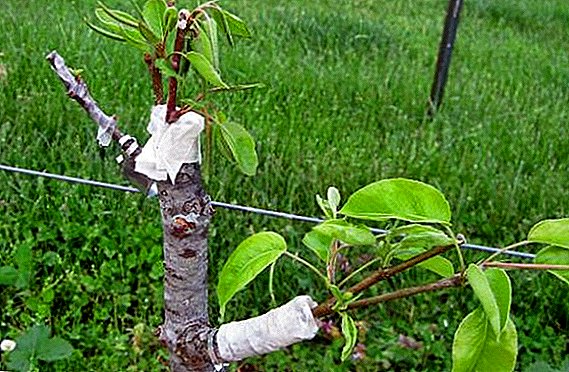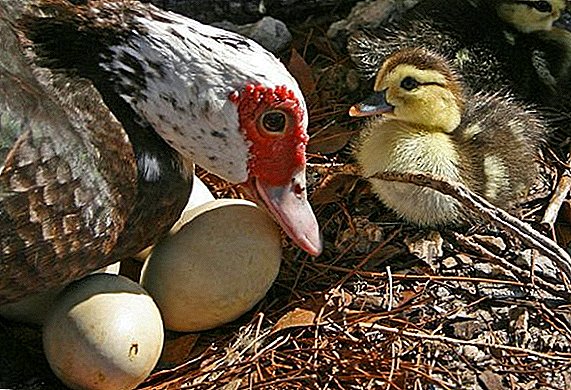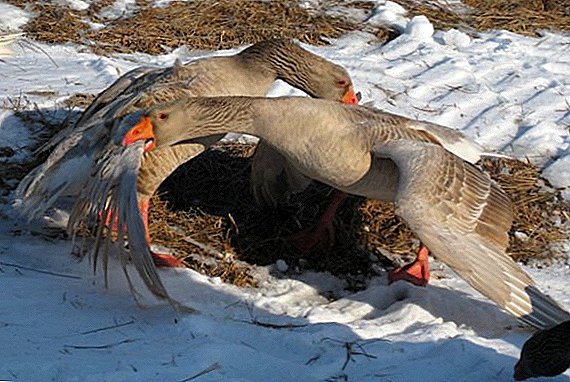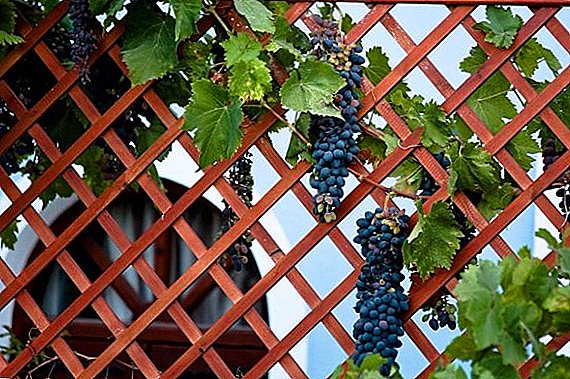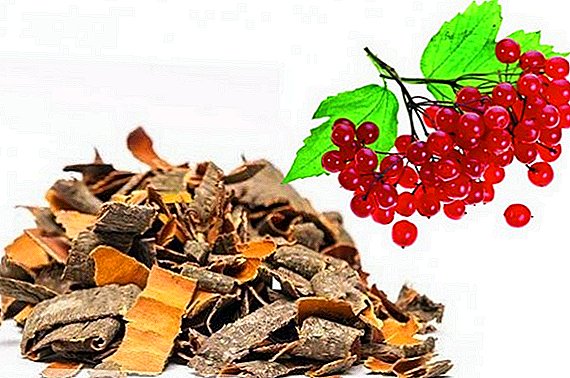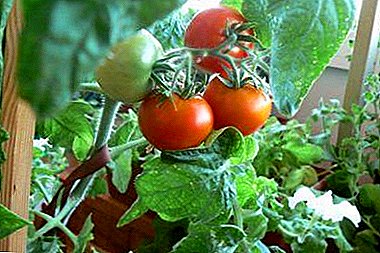
What tricks the gardeners do not go to get high yields on their home plot! Look for highly productive varieties of tomatoes, process them with various preparations, constantly feed them with various fertilizers.
Some decide on a serious and responsible step - growing 1 plant on 2 roots, which is obtained as a result of vaccination. The article tells about the advantages and disadvantages of this method, as well as how to plant tomatoes and care for them.
Method Description
The method of growing tomatoes in 2 roots helps to solve a number of problems. In this way, it is possible to impart greater vitality to the seedlings that lacked light, and therefore it grew thin, long and weak (about the methods of growing seedlings and the rules for caring for it, read here). Or seedlings turned out too much, and with the help of this method, you can use all the young plants, planting them on a relatively small area.
Advantages and disadvantages
 This method of growing tomatoes has several advantages:
This method of growing tomatoes has several advantages:
- promotes increase in productivity by 30 - 40%;
- favors the acceleration of fruit loading, their ripening;
- increases the size of the fruit (about the difficulties and features of growing large tomatoes can be found here);
- improves the resistance of tomatoes to various diseases;
- prolongs the growing season.
The disadvantages are much less: the main ones are the considerable time spent by the grower, the presence of certain skills in planting. If the planting is done on seedlings, then because of the fragility of the stems, you can spoil a large amount of planting material.
Alatization is one of the ways of grafting, in which nearby shoots are spliced into a single whole. A stock is a plant that is being grafted; graft is the part that grafts the rootstock to give it new properties.
Preparatory work
Binding
Experienced gardeners use strips of non-woven material 0.5 mm wide as binding. If there is no such material, it can be replaced with gauze strips, clothespins for fixing the orchid peduncle, soft foil, just a linen rope or twine. Some growers use stretch film or duct tape, but they have opponents who believe that a greenhouse effect occurs under the film, contributing to the formation of rudimentary roots at the inoculation site.
Suitable varieties
It is better to lactate tomato varieties (Astrakhan, Riddle, Raja, Hospitable and others): the heavy stalks of indeterminant varieties at the splicing point can break.
Also You can sprinkle tomatoes of different varieties, one of which has excellent taste qualities (Gina, Petite, Waterfall, Family, Immortal, Aphrodite and others), and the other is resistant to diseases (Alaska, Firebird, Boheme, Blitz, Sensei and others).
Seed preparation
Before sowing, the seeds are pre-soaked in a 1% solution of potassium permanganate, in a solution of aloe juice (1: 1 with water), in a solution of Fitosporin. This will allow the seeds to strengthen the immune system, to become more resistant to diseases, to give a bountiful harvest later.
Read more about how to process tomato seeds before sowing, in a separate article.
Necessary inventory
Diving seedlings will require a large number of tanks for seedlings. For these purposes, you can use milk cartons, cut plastic bottles, flower pots with a diameter of 11–12 cm, etc. For the ablation, you will also need a sharp blade, cotton wool, salicylic alcohol.
Planting and ablation
Fundamental rules
 It is possible to splice tomatoes already planted in open ground, but it is better to do the layering even when diving seedlings.
It is possible to splice tomatoes already planted in open ground, but it is better to do the layering even when diving seedlings.- Some gardeners who follow the lunar calendar produce similar manipulations only during the rising moon.
- The time of the vaccination is evening, and it is even better to conduct a similar procedure in case of cloudy weather.
- The fragility of the seedlings can be reduced by not watering for several days before the time of ablation.
- The vaccination site should be 10 to 12 cm from the soil.
- As the stems grow and thicken, the strapping should be gradually loosened.
Timing
Tomato seeds should be sown in mid-February - early March. After 2 - 3 weeks, a dive of seedlings is made (how to grow tomato seedlings from seeds without a pick at home can be found here). A month before planting seedlings in open ground (approximately in the middle - end of April), ablactivation is performed. Splicing usually occurs within 10 to 15 days.
How to grow tomatoes with double roots: step by step instructions
- Sowing and cultivation of seedlings of tomatoes produced in the usual way.
- After the second true leaf appears on the seedlings, dive tomatoes into separate containers. Plants are planted in pairs at an inclination to each other at a distance of 2 - 3 cm.
- When the tomato stalks have reached a thickness of 4–5 mm, you can begin the process of abstracting. Previously, hands and tools should be wiped with a cotton swab dipped in salicylic alcohol.
- On each plant, gently using a blade, cut off the skin (about 1.5 - 2 cm) in the place where the splicing will be done.
- Next, the blade is made at an angle of 45 degrees incisions in the places from which the skin was removed. On the stock the cut is made from the top down, and on the graft - from the bottom up. The depth of the incision is 1/3 of each stem, its length is 6 - 7 mm.
- The cuts should be crossed by hooking one by one.
- The place of crossing must be tightly fixed by tying, connecting the two plants together.
- After the tomatoes have grown together, the stock must be removed by cutting it with a blade a little higher from the place of grafting.
- The cut point is again fixed by strapping, which can be removed after the plant is completely mature (after about a week).
Care instructions
 Immediately after vaccination, seedlings should be applied for 4 to 5 days. Temperature condition during splicing must be maintained within + 20 ° C - + 22 ° C. It is possible to put plastic bags on grafted tomatoes for 2 days to create favorable greenhouse conditions. Watering is done with warm water at the root as the soil dries out. The grafted plant is transplanted into open ground or greenhouse, and 1 to 2 lower leaves are removed (we told about the nuances of growing tomatoes in open ground here).
Immediately after vaccination, seedlings should be applied for 4 to 5 days. Temperature condition during splicing must be maintained within + 20 ° C - + 22 ° C. It is possible to put plastic bags on grafted tomatoes for 2 days to create favorable greenhouse conditions. Watering is done with warm water at the root as the soil dries out. The grafted plant is transplanted into open ground or greenhouse, and 1 to 2 lower leaves are removed (we told about the nuances of growing tomatoes in open ground here).
When disembarking, both root systems need to be slightly stretched in different directions, thereby increasing the nutrition area. Caring for him is the same as for an ordinary tomato. Be sure to tie the bush to the peg: in order not to damage the place of splicing, the stem is tied up twice - above and below the site of grafting. Also, do not forget about feeding: it is better to do it once every 10 days. You can make both organic and inorganic fertilizers.
What is the result to wait?
Successful splicing can be determined visually: the stem of one of the plants will gradually thicken, become stronger and stronger due to the additional inflow of sap from another plant.
Reference. Some gardeners, experimenters in a similar way to splice a tomato with pepper or potatoes. You can also experiment by planting shoots of different varieties of tomatoes to each other, for example, with pink (Pink honey, De Barao, Abakansky pink, etc.) and yellow fruits (Honey Spas, Persimmon, Orange, etc.).
Common Errors
- It is desirable to vaccinate with young plants: their stem is still rounded, and as it grows it becomes flat, and then the plants will not grow together.
- Do not graft to each other shoots in the event that the harness was not made tight.
The method of growing tomatoes on 2 roots requires some effort from the grower. But with a properly performed vaccination, the results will exceed all expectations: There are enough tomatoes on the table, on the workpiece, and on all relatives and friends.


 It is possible to splice tomatoes already planted in open ground, but it is better to do the layering even when diving seedlings.
It is possible to splice tomatoes already planted in open ground, but it is better to do the layering even when diving seedlings.